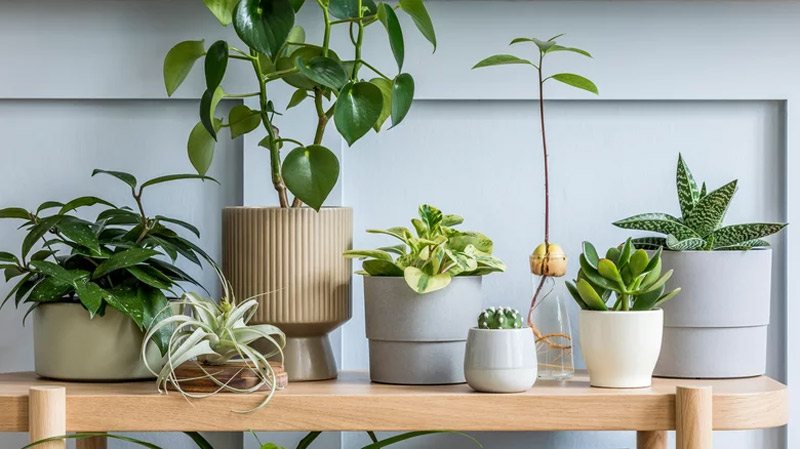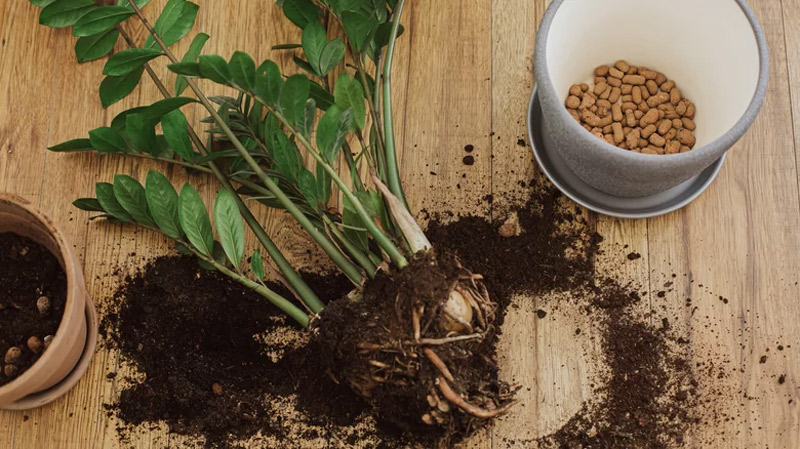![[feature] 5 Easy Tips for Repotting Your Favorite Plants](https://blogger.googleusercontent.com/img/b/R29vZ2xl/AVvXsEiYZsiH7Qv3RUWS6wnQEQKOtXijt_2bPL9qMo9t7Ntppxv-9_jIDzv6yIJ6nGPrpDwwnlKKEbvlPYMxVqiN6sT_k6RRrkWrQ0SXU_h3B37Bx42T9z-vFnQe7ruqGyAL7KSCkaD1Yoy0LNCaGjGwCT_SasY64bjUCfJwFzKtrWVo9SeabnCMz2hicuukZw/s16000/repotting-your-favorite-pla.jpg) |
| Ⓒ Provided by House Digest |
By Rebecca Wolken, House Digest
When caring for your houseplants, there are obvious aspects of care that everyone talks about, such as lighting, watering, and feeding. However, what doesn't always get the attention it needs is repotting (via Penn State Extention). Not only is how you repot a plant important, but it's also vital to your plant's health to know when you should be repotting. Repotting too soon or too late can damage or even kill the plant. As with most plant care, paying attention is the best way to ensure you're doing the right thing for your favorite plant. By observing and learning your plant's signals, you'll be able to understand its needs better and react accordingly.
Repotting is simple, but the hard part is knowing what pot to use, which soil is best, and how to pull the plant out of its old pot without breaking it. Unfortunately, there's almost always minor damage to a plant when it's repotted. But that's OK; as long as you're gentle and have minimal damage, your plant should be fine.
Read More: How Often You Should Change the Soil in Your Houseplants
Check On Those Roots
 |
| Ⓒ Provided by House Digest |
When a plant has been growing like crazy, and you think it might need a bigger pot, check its roots. To do so, gently pull the plant out of its pot and see what the roots look like. If they're circling the sides of the pot and you can see only a little bit of the soil, it's ready for a new pot. Or, if your plant is still in its nursery pot or another pot with a drainage hole, you can check to see if roots are peeking out. If they are, you know it's time for a new pot.
It's worth noting that not all plants mind being root-bound (when a plant's roots are swirling the pot). For example, plants such as ZZs and snake plants can still thrive even with thick root balls. So don't panic if you see a wall of white when you check these plants' roots. While it's important to repot these plants, it's not an emergency.
You Haven't Seen New Leaves
 |
| Ⓒ Provided by House Digest |
When plants are happy and healthy, you'll see them producing lots of new leaves and growth. Even cacti will have growth spurts, and suddenly, they're 3 inches taller! If your star plant that grows a new leaf all the time suddenly stops, it might be time to check the roots, according to The Sill. When a plant slows down on its growth, it either means it's too root-bound and doesn't have enough soil and water, or the soil it's in has been sapped of all its nutrients, and it needs new soil. Both of these situations mean it's time to repot the plant.
Each variety of plant has a different growth rate, so learning and spending time to notice how your favorite plant grows is vital to understanding what it will need. In comparison, snake plants produce leaves weekly when healthy, but many alocasia plants don't produce new leaves even when healthy. So you'll have to check other signs to see if those types of plants are ready for a new pot. For example, sudden leaf drops, limp leaves, and no new growth for a whole season probably mean it needs repotting.
It's All In The Soil
 |
| Ⓒ Provided by House Digest |
When repotting your plant, it's essential to understand the soil needs of that plant. You won't be doing your plant baby any favors by potting it with a mix of materials it won't like. If this is your first time repotting this plant, research what specific type of soil this plant wants to live in. Many plants don't mind the generic bagged houseplant mix you can find at almost any garden center or grocery store. However, these premade mixes often don't have enough aeration within the mix. Adding perlite or lava rock to your soil mix can help reduce the risk of soil packing and soggy roots that eventually turn into root rot. Plus, roots need air, not just soil and water, so it's vital to their health to ensure they get plenty of oxygen.
Read More: 6 Houseplants You Should Have in Your Garden
To make your life easier, you might also consider adding slow-release fertilizer to the mix. This will reduce the number of things you must do throughout the year, and your favorite plant will get plenty of nutrients to be its healthiest. Note, when pulling out your plant to put it in its new home, you'll need to massage the roots and try to loosen them up as best as you can without breaking them. Try also to remove as much of the old soil as you can.
Use The Right Pot
 |
| Ⓒ Provided by House Digest |
Finding the right pot to place your homeless plant can seem intimidating with all the information available. However, it doesn't have to be that complicated, and really, any plant can go in any pot as long as it's the right size and you know how to test the soil's moisture level. It's all about knowing your plant and knowing yourself, explains The Indoor Nursery. For example, if you're a chronic overwaterer, it's probably not a good idea to use pots without drainage holes. But if you use a moisture meter and test the soil before you water it, you'll be fine using a holeless pot, aka a cachepot.
Whether a plant should go in terracotta, ceramic, concrete, or plastic is totally up to you and your personal aesthetic. Terracotta pots are affordable and classic, and they help reduce the risk of root rot because the terracotta wicks away moisture. Ceramic pots are stunning and come in a wide range of styles, but they can be heavy. Concrete pots are trendy, modern, and sleek but are also very heavy. Plastic is light, easy to clean, and less likely to break if dropped, but not always the most aesthetically pleasing option.
Setting Up Its New Home
 |
| Ⓒ Provided by House Digest |
You've got the pot, the plant is out of its old home, and the soil you've researched and mixed yourself is ready to go. Now what? There are varying opinions on how to set up a new pot. Some claim you must need to rocks to the bottom to reduce the risk of root rot, while others say this is a terrible idea. In reality, if you keep an eye on your plants and use a moisture meter or your finger to test the soil, your plant will be fine with however you set up the pot.
If you're worried about the plant being top-heavy, then rocks on the bottom of the pot might help weigh it down. Additionally, putting an all-natural coffee filter or used-up dryer sheet on the bottom of pots with drainage holes keeps the soil from leaking out over time. Additionally, if you take your plants to the sink or shower to water them, this will keep your sinks and showers much cleaner.
Read More: Top 10 Gardening Tips You Should Know
When you're ready to repot, add your soil, put the plant in, and fill in the space around the plant with soil until it's locked in sturdy. This is the perfect time to add a support pole, too, if you think it's needed for plants that like to grow up a pole or for trees that might need extra support until they get their roots sturdy.
See more at House Digest























